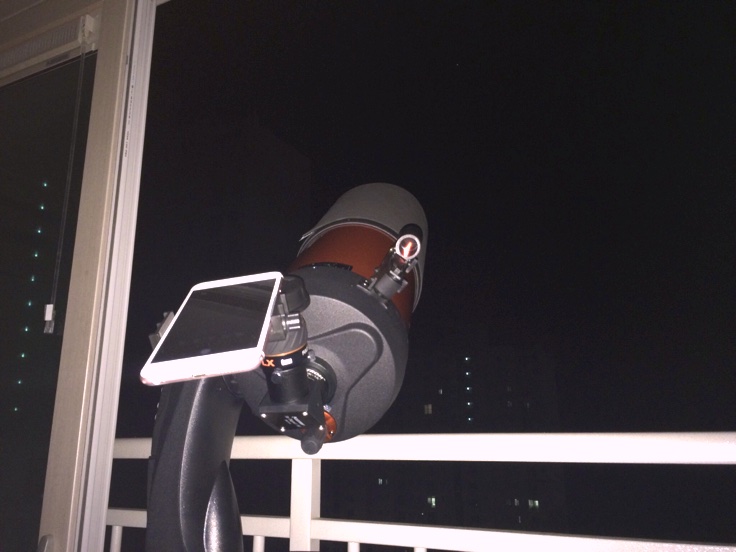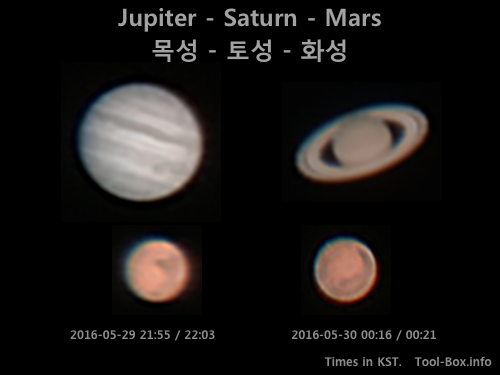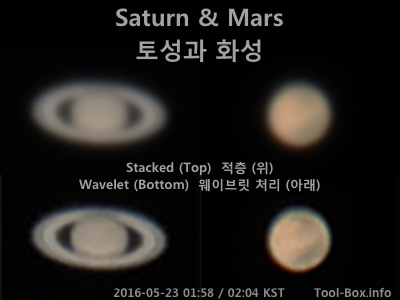Saturn and its satellites
Posted by Wesley on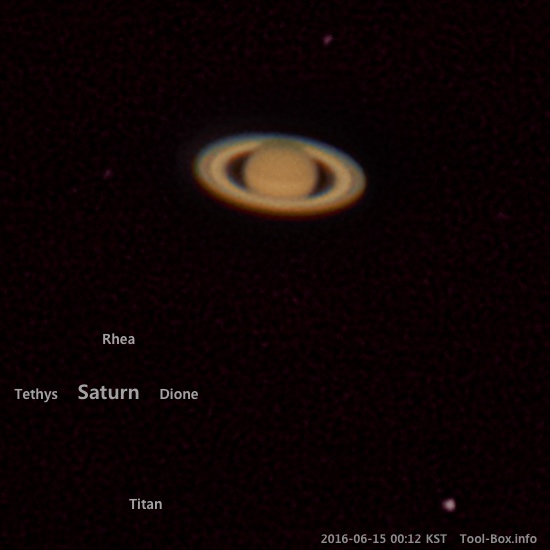
Rhea - Tethys - Saturn - Dione - Titan on June 15, 2016
I used the Opteka 2x teleconverter lens for astrophotography for the first time when I took another series of photos of the planets two days ago. This is supposed to be used with telephoto mirror lenses, but that's basically what my telescope is as well and I hoped it would be usable here. Test shots during the day came out alright, maintaining better contrast than the 2.5x Barlow lens I had been using. As you can see here, it performs reasonably well in the night, too.
I didn't originally intend to photograph the Saturnian satellites because they are quite dimmer than the Jovian ones. The four biggest Jovian satellites have apparent brightness in the magnitude 5 range, while the biggest and brightest Saturnian satellite, Titan, is around magnitude 8. The three largest after Titan are of magnitude 10. That's why I didn't take separate photos with longer exposure. Even so, post-processing the background area revealed the dim satellites. I noted their relative positions with the caption. Dione may be barely visible on on well-tuned screens.
Telescope: Celestron NexStar 6SE + Opteka 2x Teleconverter
Device: Sony A5000 (prime focus)
Settings: (3000mm) - ISO 100 - 1/3s - (f/10)
Filters: None
Time: 2016-06-15 00:12-00:13 KST
Location: Naju, Korea
26 photos stacked with PIPP 2.5.6 and RegiStax 6.1.0.8
Defined tags for this entry: astronomy, Celestron NexStar 6SE, planet, satellite, Saturn, Sony A5000, teleconverter, telescope
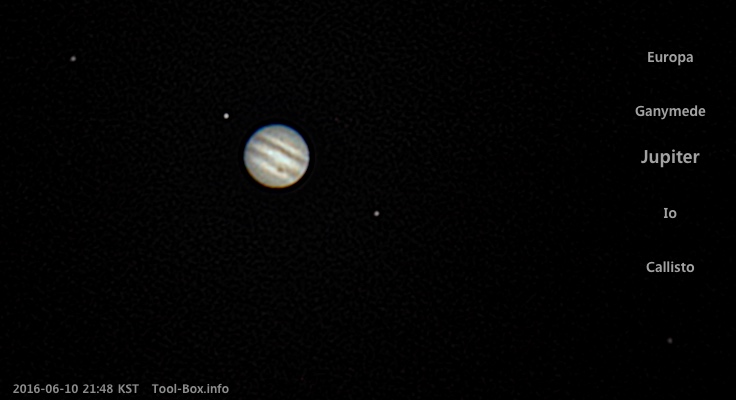
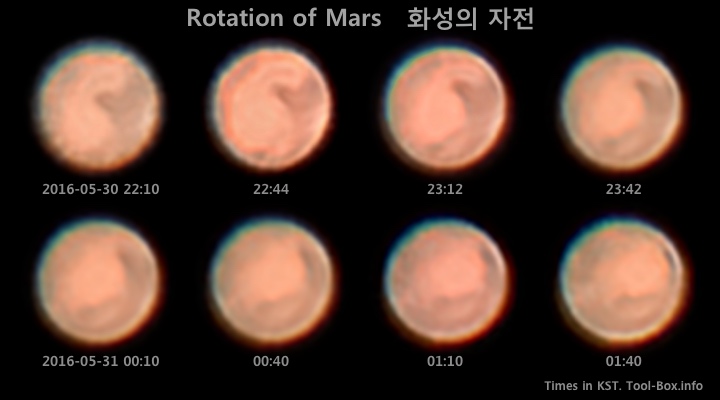
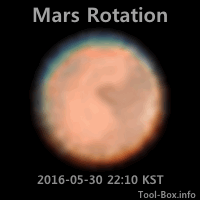 However, I wanted to see if this could be made into an animation. So I managed to take photos of Mars in 30-minute intervals in the span of 4 hours. I wanted to stay up longer, but practical considerations like sleep and humidity prevailed. As you can see at the top, I ended up with a total of eight frames after post-processing nearly 3,000 burst mode photos taken with my iPhone 6S Plus mounted on the telescope. They were then put together into GIF animation that you see on the left.
However, I wanted to see if this could be made into an animation. So I managed to take photos of Mars in 30-minute intervals in the span of 4 hours. I wanted to stay up longer, but practical considerations like sleep and humidity prevailed. As you can see at the top, I ended up with a total of eight frames after post-processing nearly 3,000 burst mode photos taken with my iPhone 6S Plus mounted on the telescope. They were then put together into GIF animation that you see on the left.